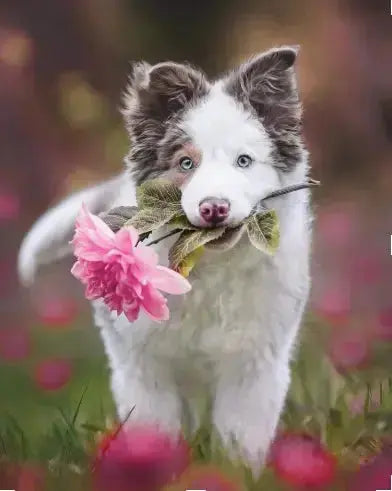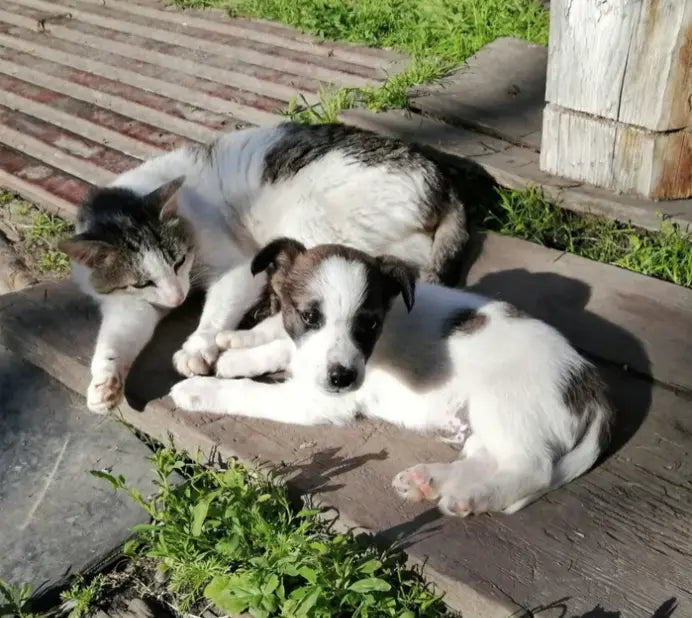Introduction
As pet owners, one of our primary concerns is ensuring that our dogs are safe and healthy, especially when it comes to their environment. Gardens, while beautiful and calming, can be a hidden danger for our four-legged friends. Some common plants are toxic to dogs and can cause serious health problems if ingested. With the help of services offering international flower delivery, it's easy to enjoy beautiful blooms, but it’s important to also be aware of which plants are harmful to our pets. This article will explore the 10 most dangerous plants for dogs that might be lurking in your garden and provide tips on how to prevent poisoning.
1. Oleander
Oleander is a popular ornamental shrub, known for its vibrant flowers, but it is highly toxic to dogs. All parts of the plant, including leaves, flowers, and stems, contain toxic compounds called cardiac glycosides. These can cause severe heart issues, including arrhythmias and heart failure. Symptoms of poisoning include drooling, vomiting, and irregular heartbeats. If you have this plant in your garden, be sure to keep your dog away from it. Even the smallest amount ingested can be fatal.
2. Azalea
Azaleas are a common shrub found in many gardens and are often planted for their striking, colorful flowers. However, they contain grayanotoxins, which can cause serious gastrointestinal and cardiac problems in dogs. Ingesting even a small amount can lead to symptoms like vomiting, diarrhea, drooling, and in severe cases, death. It's crucial to keep dogs away from this plant, especially in the spring and summer when the flowers are in bloom.
3. Sago Palm
Though it may look decorative, the sago palm is one of the most dangerous plants for dogs. Every part of the plant, especially the seeds, contains toxins called cycasin, which can cause liver failure and even death. Symptoms of sago palm poisoning include vomiting, lethargy, and seizures. If your dog ingests any part of this plant, immediate veterinary care is essential to increase the chances of recovery.
4. Autumn Crocus
This beautiful flower is often found in gardens in the fall, but it contains colchicine, a potent toxin. Ingesting autumn crocus can cause gastrointestinal distress, liver failure, and kidney damage. Symptoms of poisoning include severe vomiting, diarrhea, and abdominal pain. If you suspect your dog has eaten this plant, contact a vet immediately. The autumn crocus is especially dangerous because its toxic effects may not appear until several hours after ingestion.
5. Foxglove
Known for its tall, spiky flowers, foxglove contains toxins that affect the heart. The toxins found in this plant, called digitalis, can cause serious heart arrhythmias, vomiting, and diarrhea in dogs. Ingesting foxglove can result in severe heart complications, and it may even lead to death if not treated promptly. Be cautious of this plant, especially if your dog has access to your garden or nearby wild areas.
6. Lily of the Valley
Another plant with heart-related toxins is lily of the valley. Ingesting even small amounts can cause heart arrhythmias, dizziness, and nausea. The sweet fragrance of the plant may attract dogs, but it is important to keep them away from it. Symptoms of poisoning include excessive drooling, stomach upset, and abnormal heart rhythms. If you notice any of these symptoms after your dog has ingested a part of this plant, seek veterinary care immediately.
7. Daffodils
Daffodils are a beautiful spring flower, but they contain lycorine, a compound that can cause vomiting, diarrhea, and drooling in dogs. If your dog consumes the bulbs, the symptoms can be more severe, including tremors and cardiac problems. The bulbs of daffodils are the most toxic part of the plant, and they often lie buried in the soil, making them particularly tempting for dogs to dig up. Always ensure that your dog does not have access to areas where these flowers are planted.
8. Castor Bean Plant
Castor beans, found in many gardens, are highly toxic to dogs. The plant produces ricin, a deadly protein that can cause severe abdominal pain, vomiting, and even death. All parts of the plant are toxic, particularly the seeds. The beans are often mistaken for decorative items, but they are incredibly dangerous if ingested. Keep this plant out of your garden if you have dogs, and always check your yard for any dropped seeds.
9. Rhododendron
Rhododendrons are commonly used in landscaping for their stunning blooms. However, they contain grayanotoxins that can cause nausea, vomiting, and abnormal heart rhythms. Ingestion of even a small amount can lead to serious health issues, including coma or death. Always make sure your dog stays away from this shrub, as it’s easy to overlook its dangers.
10. Chrysanthemum
Chrysanthemums are commonly found in gardens and as cut flowers in floral arrangements. While not deadly in small amounts, they can cause gastrointestinal distress in dogs, including vomiting and diarrhea. If your dog chews on chrysanthemums, the resulting digestive upset can be uncomfortable but rarely life-threatening. However, it's still a good idea to keep your dog from ingesting this plant, as its mild toxicity can cause discomfort.
Prevention and Safety Tips
To keep your dog safe from harmful plants, it's essential to be proactive. Regularly inspect your garden for toxic plants, and consider replacing them with dog-friendly alternatives. If you suspect your dog has ingested a toxic plant, act quickly and contact your veterinarian. Additionally, ensure that your dog cannot access plants in public areas or on walks, as some harmful plants may be found in local parks. You can also take extra precautions by fencing off garden areas or planting non-toxic flowers and shrubs.
Conclusion
Gardens are a great place for relaxation and enjoyment, but it's important to recognize the dangers that certain plants pose to your dog. By being aware of which plants are toxic and taking precautions, you can keep your pet safe. Whether you're decorating with beautiful flowers or growing your own, always prioritize the safety of your furry friend when choosing plants for your home or garden.



